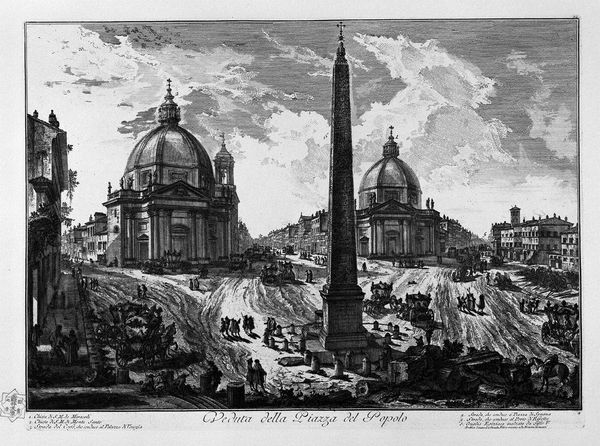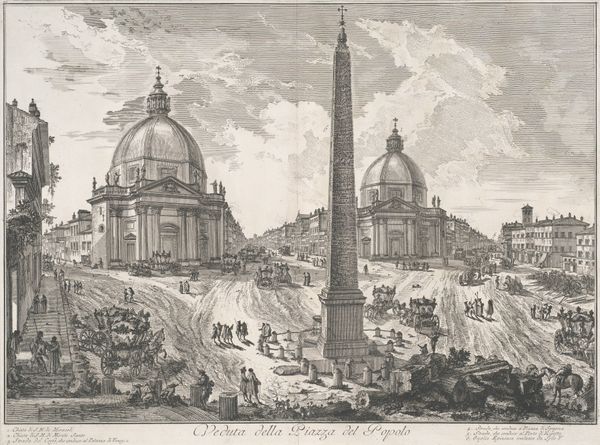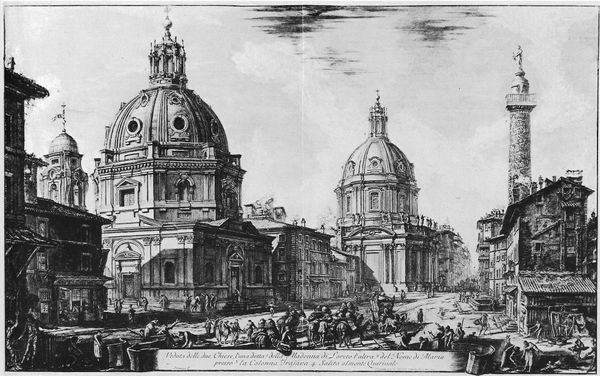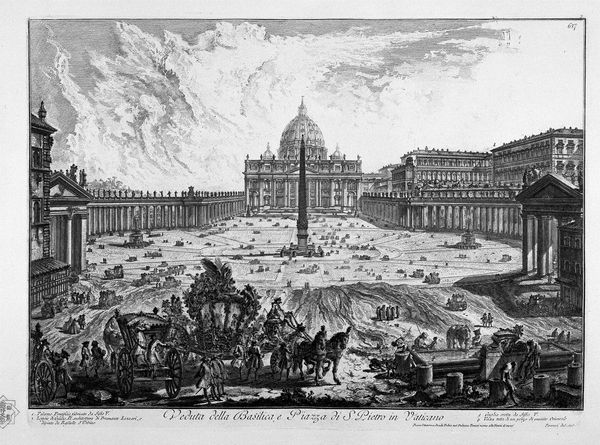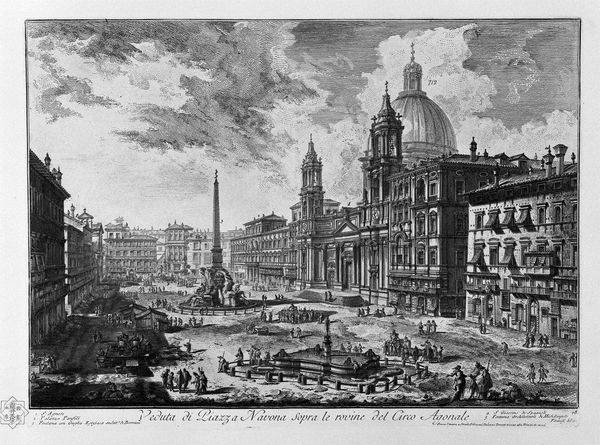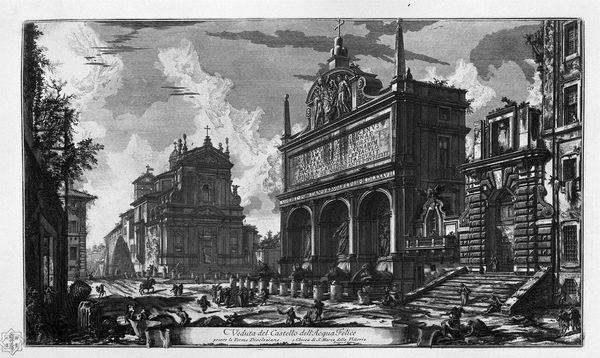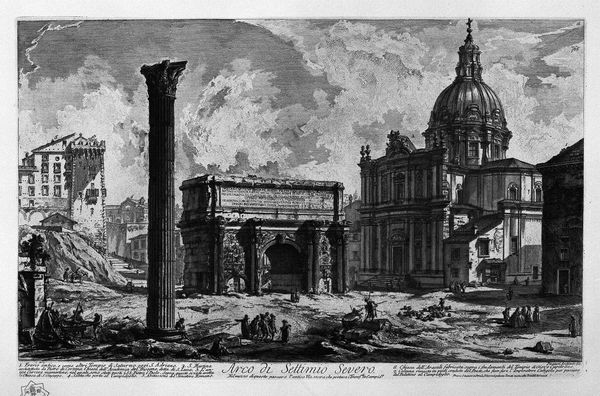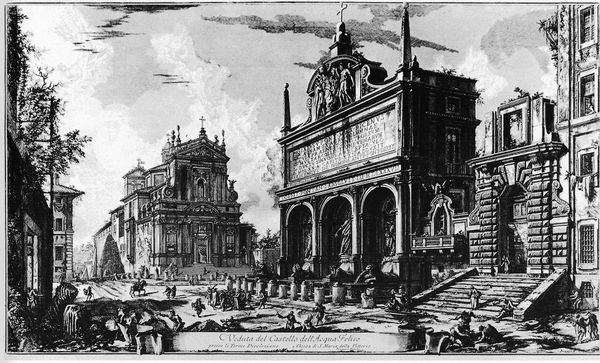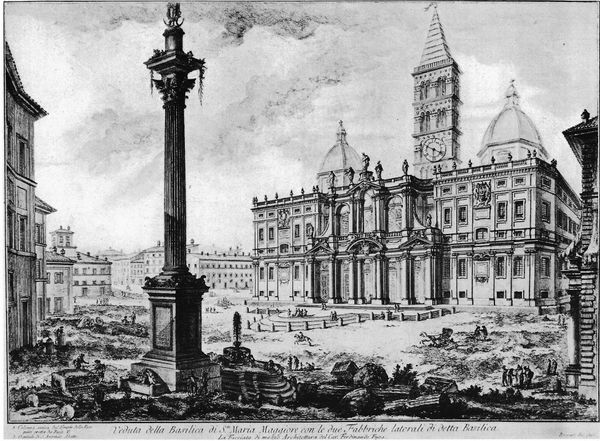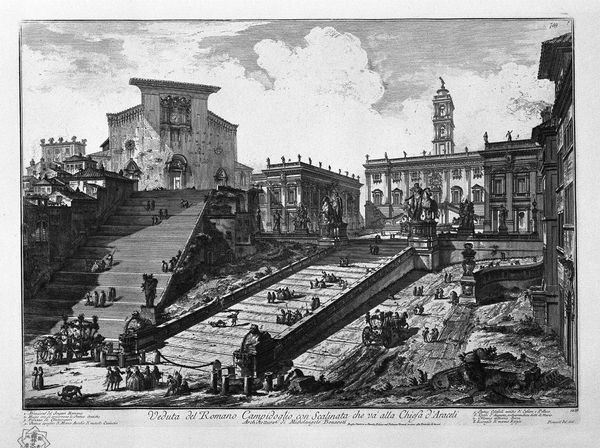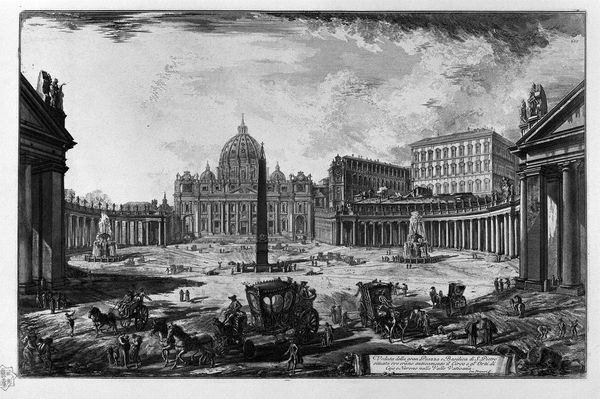
print, etching, engraving
# print
#
etching
#
landscape
#
perspective
#
romanesque
#
cityscape
#
engraving
Copyright: Public domain
Editor: We're looking at *Vedute di Roma* by Giovanni Battista Piranesi, an etching and engraving. The scene feels almost staged, the way everything is arranged, especially the obelisk splitting the frame. What catches your eye when you look at this, and how do you interpret it? Curator: What immediately grabs me is the romanticized, yet incredibly detailed, portrayal of urban life. Piranesi, through his masterful etching, doesn't just present a cityscape. Instead, he comments on Rome’s relationship to its own history and the performance of power. Note how the figures – seemingly anonymous, caught in their daily routines – are dwarfed by the imposing architecture. How does that contrast contribute to our understanding? Editor: I see what you mean about the scale. They look almost insignificant compared to the buildings. Is he trying to say something about the individual's role in such a monumental city? Curator: Precisely. Consider the political implications: Rome, historically the center of an empire and then the Catholic Church, uses architecture to assert dominance. Piranesi is active during a time when Enlightenment ideals are questioning these established structures of authority. In this light, isn't the deliberate focus on decay – the broken stones in the foreground – equally crucial in interpreting the narrative Piranesi is constructing? Editor: That’s interesting; it disrupts the romantic ideal I initially saw. So, he is using these details to almost subvert the grand view? Curator: Absolutely! The presence of ruins implies not just a glorious past but also questions the stability and longevity of current power structures. Think of the image as a dialogue between past grandeur and present realities, prompting us to think critically about how power manifests itself in urban spaces and impacts the everyday lives of ordinary citizens. Editor: I'm definitely seeing a deeper layer of complexity here. I never would have considered the commentary on power dynamics just by looking at the beautiful architecture. Curator: Exactly, and by analyzing these artworks we open space to critique, reflect and question, giving rise to societal change and growth.
Comments
No comments
Be the first to comment and join the conversation on the ultimate creative platform.
